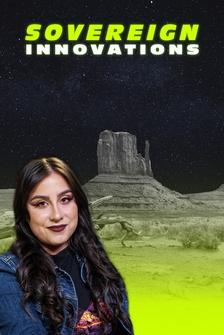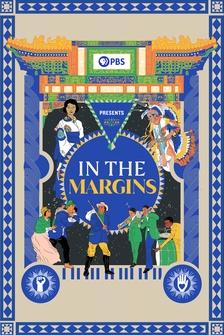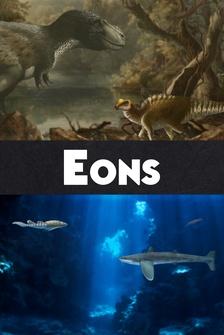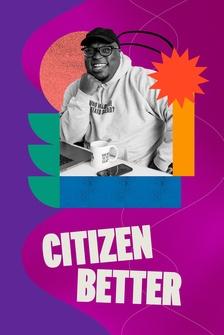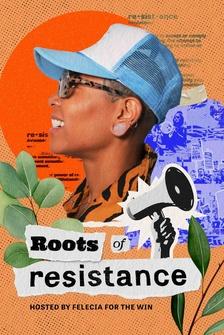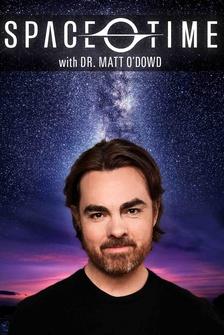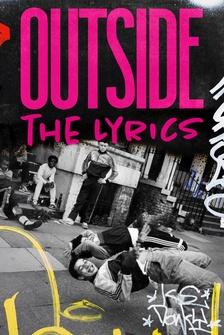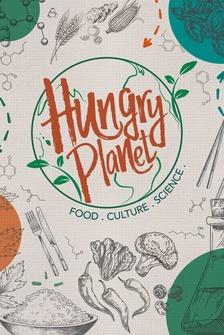In his farewell address to the nation on September 19th 1796, founding father and President George Washington issued a grave warning.
But what was the looming evil that he foresaw as the great risk to the fledgling United States?
Political parties.
The farewell address was published in the Daily American Advertiser (a Philadelphia newspaper).
He wrote: “The alternate domination of one faction over another, sharpened by the spirit of revenge, natural to party dissension, which in different ages and countries has perpetrated the most horrid enormities, is itself a frightful despotism[…] It serves always to distract the public councils and enfeeble the public administration.
It agitates the community with ill-founded jealousies and false alarms, kindles the animosity of one part against another, foments occasionally riot and insurrection.” Washington’s advice against political parties was shared by one of his successors, John Adams who in 1780 commented “a division of the republic into two great parties … is to be dreaded as the greatest political evil.” So with these explicit warnings as the foundation of our country, how and why did political parties form?
And how did the US end up with essentially a two party system?
Today we’ll get to the bottom of this history, and work through why political parties have always been a contentious institution in the United States.
So before we get into how we ended up with the two most powerful and well known political parties in the US today, the Democrats and Republicans, we should first look at: What a political party even is And How they got their start in the United States.
According to political scientist Robert Huckshorn in his book Political Parties in America an American political party is: ’ ...an autonomous group of citizens having the purpose of making nominations and contesting elections in hope of gaining control over governmental power through the capture of public offices and the organization of the government.'
Now this doesn’t encompass the vast array of political parties that span the globe.
And political scientists don’t agree on the working definition of what a political party is or should be.
Some assert that political parties are merely organizational tools for winning elections while others claim parties are tied together by their ideological roots.
For the purposes of our video we’ll stick with Huckshorn’s definition, because it most closely mirrors what (most) political parties are today.
But they weren’t invented on American soil.
In fact they date back decades before 1776.
And a lot of this origin story explains why the founding fathers were so resistant to the idea.
Before there were the American political parties that we know today, there were the “factions” of England and the Glorious Revolution.
And even back then we’re still dealing with two major parties.
Except during this time it was the Whigs and the Tories, not the Republicans and Democrats.
The Glorious Revolution of 1688 in Britain saw the replacement of Catholic King James II with his Protestant daughter Mary and her husband William of Orange.
The revolution, also sometimes referred to as the “Bloodless Revolution” lasted until 1689 and achieved a few major goals.
First was the replacement of a Catholic king with a Protestant monarch.
The second was an increase in the power of Parliament and a decrease in the power of the monarchy, which some historians conclude was the beginning of introducing a democratic system in Britain.
And finally it was a key moment in the bitter and sustained battles between the Whigs and the Tories that cemented the political parties.
So flash forward to the founding of the US.
Many of the authors of the constitution were wary of the “factions” that had formed in Britain during the preceding decades and were quick to warn against it.
But that didn’t stop political parties from taking hold.
The first political parties, or ‘factions’ in the newly formed United States were the Federalists and the Democratic-Republicans.
Although judging from the kind of confusing name mash up, you might guess that the Democratic-Republicans were the predecessors of the current Democratic and Republican parties, but they actually were (more accurately) anti-Federalists.
So Federalists, led in large part by men like our first secretary of the treasury (and later star of an award winning hip hop musical) Alexander Hamilton, believed in a strong central federal government.
Hamilton and his followers envisioned a US where trade, a centralized bank, and international relations (specifically with Britain) were key to the future of the new nation.
This was also often seen as the party of the elite and well to do.
On the other hand, the Democratic-Republicans, led by men like future President Thomas Jefferson favored an agrarian society ruled by smaller local governments instead of a central power.
They also favored an alliance with France.
These early parties paved the way for the bipartisan system that we all know and love (to hate on) to this day.
So early political parties in the US were rapidly evolving and changing, and by the 19th century they were fully entrenched.
But that didn’t mean that people were any more keen on the idea of a two party system, or that the term “party” wasn’t still heavily associated with political discord and self-serving individuals.
The word was a close synonym for “factions” and had a largely negative connotation in both the US and throughout Europe.
By the 19th century we start to see political parties operating in much the way we think of them today: helping candidates to run for office and shoring up political support from the (at that time) expanding electorate.
In the Handbook of Party Politics political scientist Susan E. Scarrow writes: The emergence of party-organized politics was an unanticipated, and even unwanted, side-effect of the liberalization and democratization of politics in that century.
Although countries took varied routes to the modern party era, by the beginning of the 20th century recognizably modern parties had begun to play an important role in many places, structuring electoral choices, coordinating legislative and executive action, mobilizing the electorate, and recruiting candidates.
Scarrow attributes some of this to “parliamentarization” across different European countries, which is a mouthful of a word that essentially means the expansion of parliamentary governments.
However, she does note that we can’t attribute the rise of political parties in the 19th century just to...that long word that I don’t really want to say another time… because the process spread throughout Europe at different rates and times.
Now back to the American two party system.
The Democrats were formed in the 1820s with Andrew Jackson as their figurehead, who would later become president.
Jackson’s Democrats of the early 19th century supported westward expansion and the subjugation of Native American people with things like the Indian Removal Act of 1830 and the later adoption of Manifest Destiny (or the belief that the United States should expand across the entire North American continent).
By the time we see the emergence of the Republicans after the collapse of the Whigs, the Democrats were already a few decades old.
In the 1850s the Democrats, were largely made up of voters from Southern states that supported the continuation and expansion of slavery.
In 1854, just 7 years before the onset of the American Civil War, the Republican party was formed out of the ashes of the Whigs (not the ones from the Glorious Revolution, these were all new Whigs).
The Whigs (later the Republicans) were largely made up of Northerners.
And although they were divided on the issue of slavery, their traditional power base opposed expanding slavery into the new states being incorporated into the US at the time.
The Republicans managed to elect a president, Abraham Lincoln, to office.
And though Lincoln vowed to not interfere in slavery in the southern states, he also was in favor of his party’s plan not to see it expanded.
Southern states eventually seceded from the Union over the issue of slavery, forming the Confederate States of America.
The remaining Northern states (the Union) fought to keep them from seceding in the Civil War.
The North emerged victorious and the Republican party set about expanding rights and freedoms to newly emancipated Black citizens.
But those same citizens were met with resistance, and oftentimes violence, by Southern Democrats who sought to keep racial hierarchies in place.
But in the 1870s, after the end of the period known as Reconstruction, Northern Republicans effectively gave up on the agenda of reforming the south.
This time period would see the rise of anti-black legislation such as first Black Codes and then Jim Crow spread throughout the region well into the mid 20th century.
You can learn more about that in our video “The Racist Origins of US Law.” By the 20th century, the identities of the now firmly established two major parties began to shift again.
According to Vox this period saw a marked shift for a couple of reasons.
First, they note that many Northern Republicans had become wealthy as a result of government contracts during the Civil War.
As they were effectively abandoning an agenda of racial progress and enfranchisement for Black citizens, parts of the Republican party began to form its identity around being pro-business.
And while this was useful during times of prosperity, it was less helpful during times of financial adversity.
Enter, the Great Depression.
In the 1930s the US was going through a huge economic downturn.
In the ensuing chaos the country elected a Democratic president, Franklin D. Roosevelt, who sought to end the financial crisis through the creation and expansion of government programs between 1933 and 1939 like: the Social Security Administration, and public works projects.
This helped to rebrand the Democratic party as one that was in favor of a more hands on approach to an expansive government.
But the parties’ identities were still in flux.
Over time, the Republican party cemented its identity around issues like decreasing the role of government and supporting business, while Democrats became divided around the issue of race.
Older Southern Democrats were entrenched in their belief in a pro segregation agenda, while Northern and Western Democrats supported the Civil Rights agendas of the 1950s and 1960s.
Soon the Southern Democrats who opposed integration all but abandoned the Democratic party in favor of Republican ideologies, marking a seismic shift in the identities of both parties.
Additionally an increase in the number of minority voters in the subsequent years saw another shift in the demographic makeup of the Democratic party, with large blocks of Black voters who had historically supported Republican candidates jumping ship for a new political identity.
So there you have it folks.
The road to the two party system in the US had its start at the very beginning of our country and continues to polarize voters to this day.
(But If you’re interested in learning more about 3rd party candidates in the 19th and 20th century who defied the two party system, be sure to check out our video on the “History of Socialism in America.”) And according to some, partisanship is only getting worse and worse in the US.
A 2020 Pew survey found that: Roughly four-in-ten registered voters in both camps say that they do not have a single close friend who supports the other major party candidate, and fewer than a quarter say they have more than a few friends who do [...] Most voters instead report having a lot of friends who share their political preferences.
Perhaps this increase in polarization and partisan politics is what Washington and Adams most feared way back in the 18th century, when they warned us to love country over party.
Perhaps in the future we’ll see a decrease in the influence of major parties in US politics.
But for now it seems like these centuries old institutions are here for the long haul.






